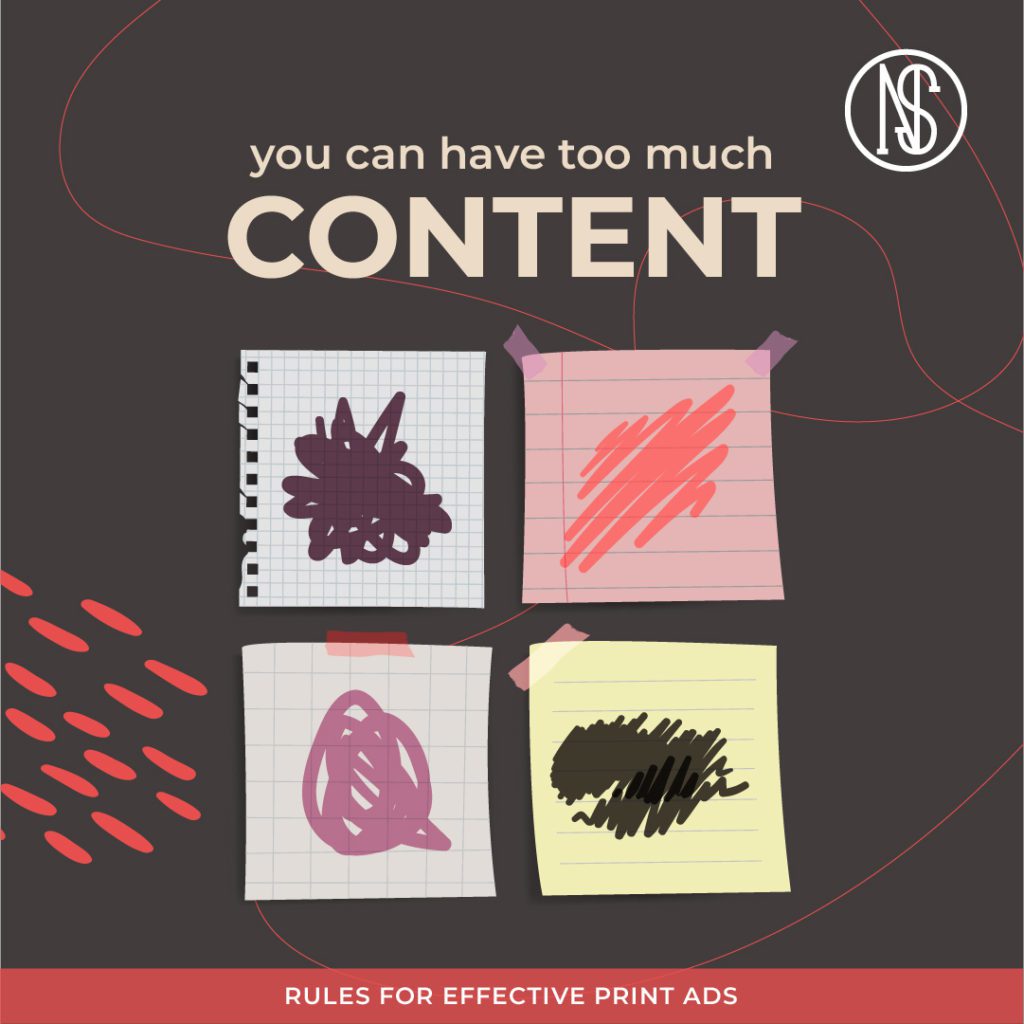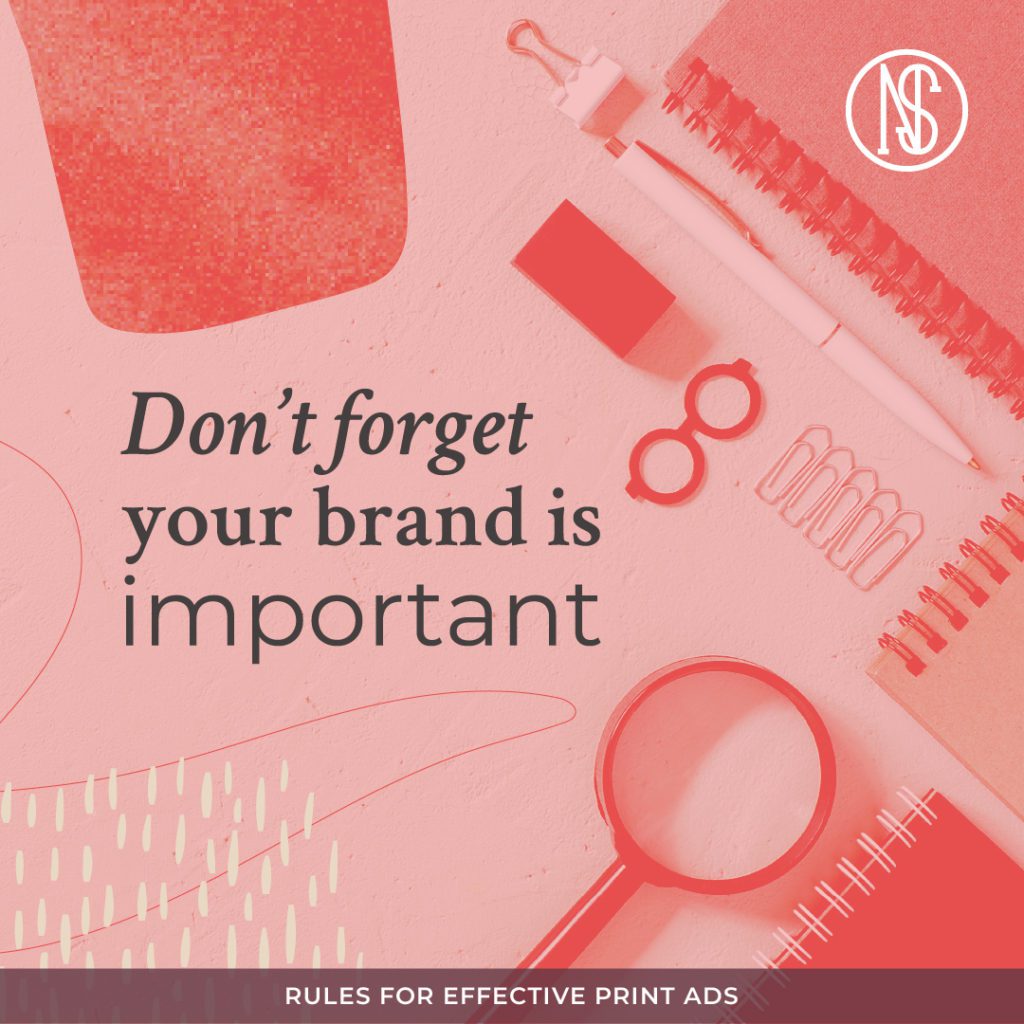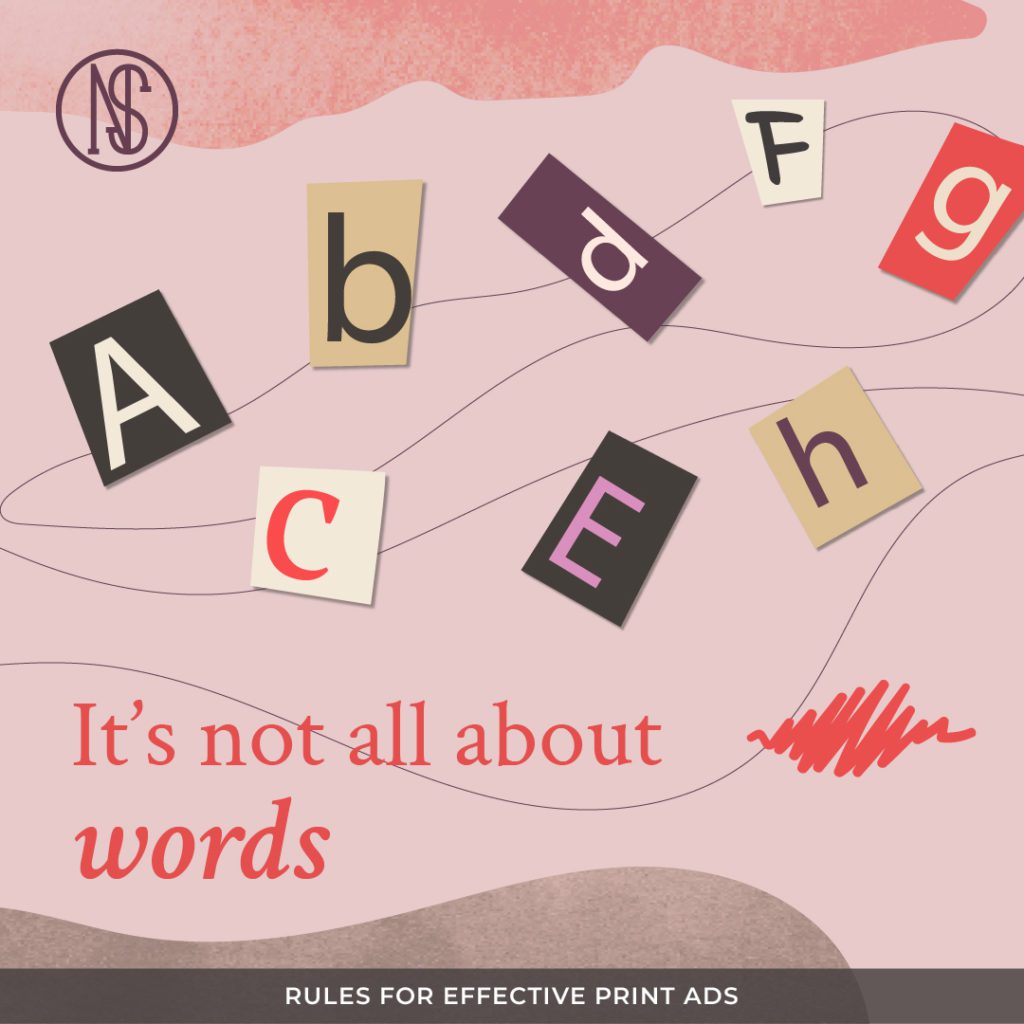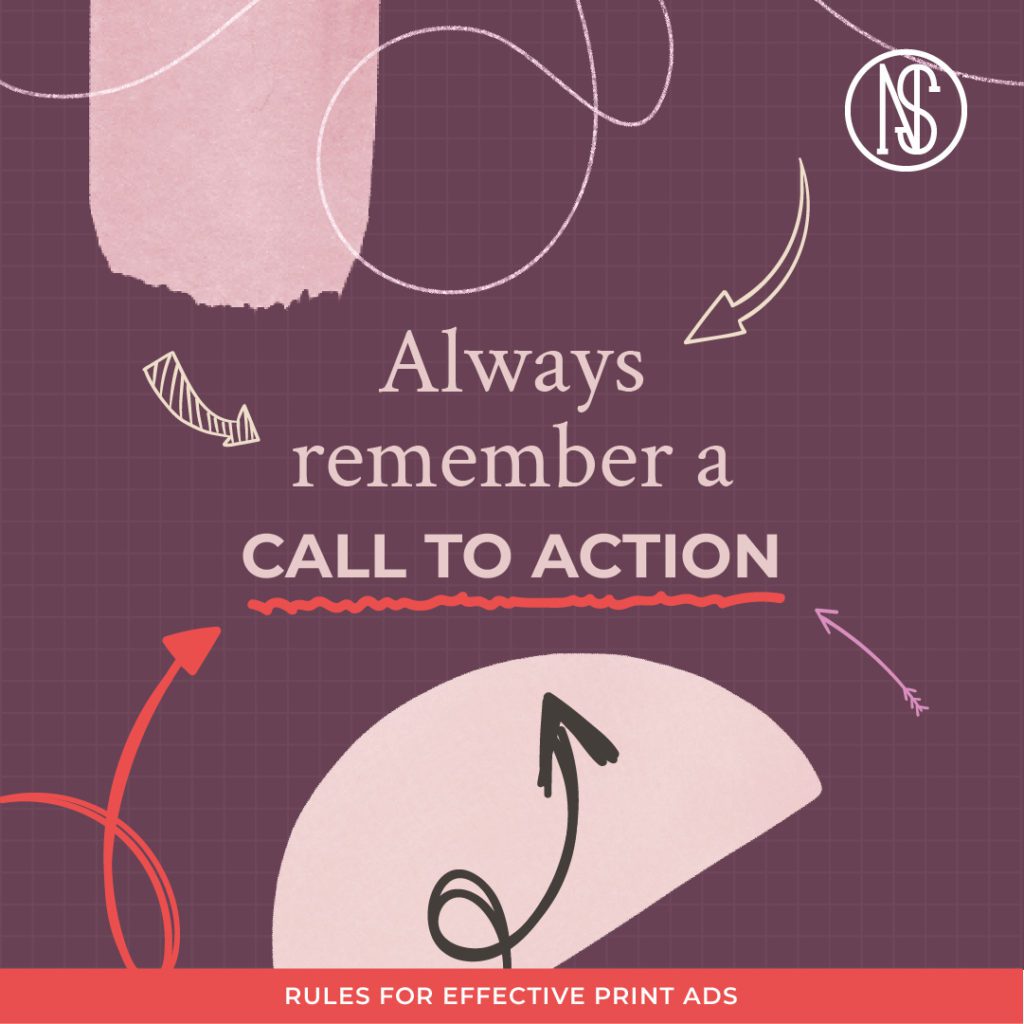Full page. Full-bleed. Quarter page. Ads that are disguised to look like they are not ads. Ads that are very small. Ads that take up entire multi-page spreads.
After years of designing and exploring the fine art of ad making. I have discovered that many print ads are simply … yucky—when they do not have to be. In fact, most of those “bad ads” should be, pretty damn good.
Having a good understanding of what makes an ad design effective—to reach a target audience will help your business regardless of whether you are hiring a professional like me (shameless plug much?) to create your ads or using tools you already have to DIY your advertising.
Stick to One Message Per Print Ad Design

It may seem like a good idea to tell potential and current customers about multiple sales or events that you have coming up. (Particularly when you have lots of space in your print ad design to do it in) But this can really muddle up your ad and make all the content begin to feel like a wall of meaningless text in the reader’s eyes.
Keep it simple. Use a direct headline and simple copy. If you need more than one or two sentences, consider using bullet points. Bullets are quick to read and allow people to scan content.
Ask yourself, what do you want your customers to know? Pick one thing to tell them and say it in the fewest words possible. Use any additional content to reinforce your main message, not to create new messages.
You Can Have Too Much Content

Oh, look a free millimeter of space, better add another word or six. (… And this is where Luke Skywalker has his hand chopped off and falls into the void screaming Nooooooo …)
White space is a thing to be cherished and on a busy page full of multiple ads—your secret weapon.
Keeping your word count down in your print ad design means that more of your reader’s attention span will be spent on your one message. Embrace white (empty) space and simple clean copy with a single message and more readers will absorb what you have to say in your ad.
Don’t Forget Your Brand is Important

Even a fledgling business just getting on its feet has a brand to maintain. From day one, you have a brand.
The trick is maintaining consistency in the quality of your business, both visually and tonally. Logos and brand standard guides are one of the ways that graphic designers and marketing professionals help businesses big and small maintain a consistent message.
Use the previous materials and standards of your business’s brand to inform what your print ad design should look like and sound like. If you don’t have a set style guide, pull from your website, fliers, menus, business cards, or any other materials that your business has already created. Ideally, they should all look fairly similar. (If they don’t you may want to consider looking at your brand messaging as a whole and work on making them more consistent, but that is a blog— a problem for another day.)
Remember, ads don’t exist as an island alone in the middle of an ocean, and if they do they are an archipelago with insane migration patterns. Your ads should be consistent with the other materials you have.
It’s Not All About Words

It’s also about graphics and photos. (I am a graphic designer, remember!) You can say just as much with a well-placed image as you can with two or three paragraphs of text. For example, a lawn care specialist may show before and after shots of a yard project. These two photos are a testimonial of the work from a real client, an example of the quality and if they are time-stamped they show how quickly a project can be turned around. Magic!
In what ways can photos or graphics tell your business’s story? Will showing your restaurant or bar bring more people into the door? Do you carry or make a line of products that stop people in their tracks? What images will make you stand out? Or maybe you are truly the rare bird who speaks without images?
ALWAYS Remember a Call to Action

You have your message, you have your brand under control, you picked just the right images—pulled back on the copy so that it is just right. You have struck a master balance point! There is just one thing left to consider, did you tell the person looking at your ad what to do?
If you want the person reading your ad to walk into your shop door remember to tell them to “Come in Today.” And, despite how easy it is to Google, it may be wise to include at least part of your street address. If You are having a Sale, don’t forget to include the dates. It is important to let anyone who sees your ad know exactly what to do next.
A little Extra: Advice that will Help Make Your Advertising Sing, Not Scream
Should Your Print Ad Be Witty?
It is really hard to be witty or funny in an ad. Many big brands pay a hell of a lot of money for just the right amount of non-offensive humor in their ads. Step one, is to always get your one message across clearly—if you can manage your ad message with a little wit yes—go for it. But you do not need to make wit a goal and wit will not necessarily make your ad better.
What Size Print Ad Should You Choose?
Your Ad Size is going to depend on a multitude of factors. What is your budget like? Would a full-page ad be better than a smaller ad? Where are you buying the ad? Different magazines, newspapers, and ad locations offer different benefits. Sometimes the smaller ads, may be placed better. For example, many magazines place small ads on the same pages as story content. This means that as someone reads an article they will see your ad the whole time they are on the page—this can be multiple minutes.
A big ad is not always the best ad size. Ask the representative who is selling your ad about placement. See if you have an option for where the ad will be placed, try for the “best” places where your target audience spends the most time—like in the middle of an article about a subject related to your business.
How Many Ads Do You Need?
I have never sold anyone an ad, so I will not try to say that you need to have ads in every newspaper and magazine within a 30-mile radius of your location every month. But, there is a lot of information that shows that multiple ads work a lot better than a one-off. You may want to think about running 3 or 4 in succession to see if they are performing. If you have never run any ads before or are totally new to a market you may need to run 7-10 ads before starting to hear people say, “I saw your ad!”
How Do You Know a Print Ad Design Is Working?
There are a few key ways to know if a print ad works. The easiest is to build it into the ad, this can be in the form of a coupon or a special trackable phone number. Second, train your team to ask people how they heard about the company, event or sale. People are generally happy to share information about seeing an ad in newspapers, magazines or anywhere else. (bus stop anyone?)
Ok folks. Get out there and make your advertising awesome!





0 Comments